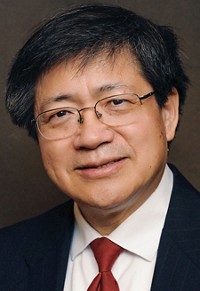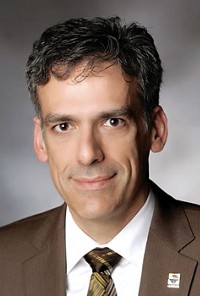Advertisement
Grab your lab coat. Let's get started
Welcome!
Welcome!
Create an account below to get 6 C&EN articles per month, receive newsletters and more - all free.
It seems this is your first time logging in online. Please enter the following information to continue.
As an ACS member you automatically get access to this site. All we need is few more details to create your reading experience.
Not you? Sign in with a different account.
Not you? Sign in with a different account.
ERROR 1
ERROR 1
ERROR 2
ERROR 2
ERROR 2
ERROR 2
ERROR 2
Password and Confirm password must match.
If you have an ACS member number, please enter it here so we can link this account to your membership. (optional)
ERROR 2
ACS values your privacy. By submitting your information, you are gaining access to C&EN and subscribing to our weekly newsletter. We use the information you provide to make your reading experience better, and we will never sell your data to third party members.
Drug Discovery
Perspectives: Back to the future of chemistry
A chemistry stalwart says the field must remain the creative and useful science, and not become the narrow science
by Ronald Breslow, Columbia University
May 2, 2016
| A version of this story appeared in
Volume 94, Issue 18

During my long career doing chemistry, I have formed some strong opinions about what chemistry will be like in the future, or at least what it should be like. I have written about this topic in various places, including a 2003 National Research Council report titled “Beyond The Molecular Frontier,” which is also known as the Breslow-Tirrell Report. It followed similar blue-ribbon panel reports: the 1965 Westheimer Report, also known as “Chemistry: Opportunities and Needs”; the 1985 Pimentel Report, also known as “Opportunities in Chemistry”; and the 1988 Amundson Report, also known as “Frontiers in Chemical Engineering: Research Needs and Opportunities.”

These studies were designed to provide a snapshot of where research in the chemical sciences stood at the time and to offer a vision of how advances that seemed possible in the near term could contribute to a brighter future. Many of the advances envisioned by those panels are now being realized: molecular self-assembly, improved optical and X-ray methods for structural analysis, computational methods for catalyst and chemical design, and new medical diagnostics and drug delivery methods, to name a few.
Those challenges have been replaced with new opportunities for future chemists, including those who are now students. Here I identify three such challenges. Their solutions, like the challenges that came before them, will greatly advance our contribution to human welfare as well as strengthen the intellectual base of our science.
Cures, not treatments. It is our science that invents new medicines and how to make them. In this, chemists are assisted by biologists and medical researchers doing the testing. Perhaps the most general challenge in drug discovery today is to invent new medicines that will cure viral diseases. The threat is enormous: Imagine a world in which AIDS or Ebola could be passed by a mosquito bite, unless we develop medicines to conquer the diseases. But besides antivirals, other critical needs include inventing cures—not just treatments—for cancer, heart disease, diabetes, schizophrenia, arthritis, and genetic defects.
Tapping the power of the sun. We need materials with improved electrical properties, including superconducting wires that operate at or near room temperature, so that we can transfer electricity from its source to its point of use without loss from resistance. Then we could generate electricity from the sun in the desert and send it wherever it is needed. And we could develop better photovoltaic materials to convert the desert sunlight to electricity; there’s plenty of room for better efficiency. Currently, we use the solar power of the past to generate energy when we burn coal and petroleum. But by developing new materials, we can take advantage of solar power beaming down at the present instead and not cause global warming and air pollution.
Systems, not substances. Another challenge for chemistry is to focus more on interacting chemical systems, not just individual substances. As an example, chemists isolated DNA and learned its structure more than 50 years ago. But that does not really tell us how life works or how we could imitate life. Life is a process in which many substances interact in organized systems, and chemistry is in its infancy in understanding these systems. For example, bacteria are quite simple living organisms, but we don’t yet know exactly how to mimic them or build on their functions with our own created, synthetic systems. Chemists will do this one day, and we will build self-reproducing molecular machines that could change our world.
In thinking about how we might achieve these dreams, one realizes that chemists have a general problem. We are creative scientists constantly making new molecules and materials, which means we must also be mindful of their impacts. That is why green and sustainable chemistry will always be in our future. We have to get better at anticipating and avoiding possible side effects or imparting unexpected toxicities to our air and water. This is yet another good reason to be a chemist: We can understand and solve such problems. Many other scientific fields have no such challenge—who has heard of green astronomy or green algebraic topology?
To prepare for our future, chemists must broaden their training, rather than be so specialized. To develop cures, we need to know more about modern biology, along with having a better understanding of the role of both organic and inorganic chemistry in disease treatment. Chemists who invent new materials need a strong foundation in solid-state physics and physical chemistry to couple with their knowledge of organic and inorganic chemistry. In short, chemistry must continue to be the creative and useful science; it must not become the narrow science.
As I think about the future for chemistry, I only wish I could be around to see these challenges met and for new ones not yet imagined to emerge for our science to address. I envy the young people today who realize how important these next challenges are and how exciting it will be to work on them. One last thing is to figure out how older chemists like me could do it all over again. That will be a more difficult challenge.
Views expressed on this page are those of the author and not necessarily those of ACS.
Share your vision for the future of chemistry below.




Join the conversation
Contact the reporter
Submit a Letter to the Editor for publication
Engage with us on Twitter